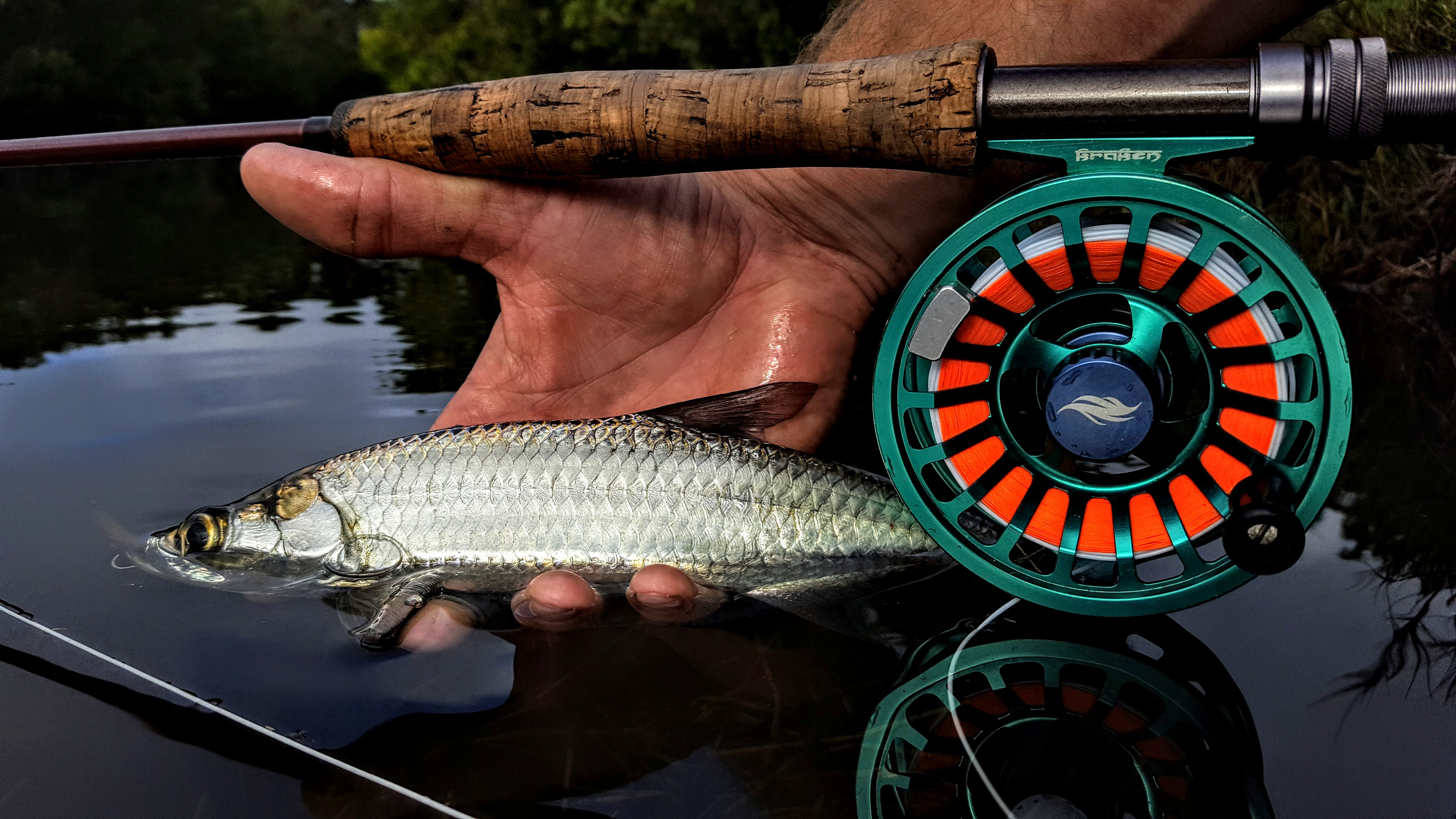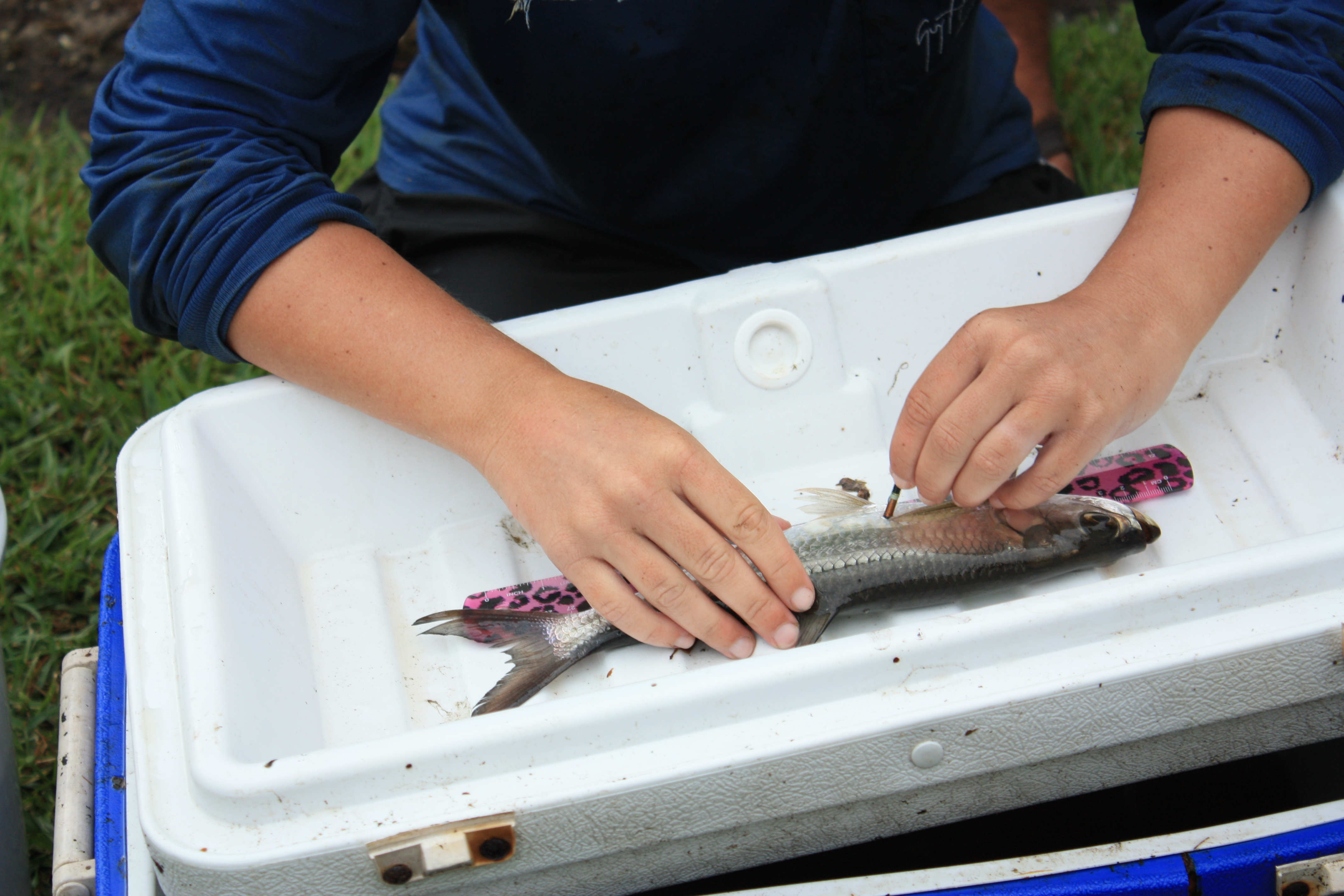by JoEllen K. Wilson, Bonefish & Tarpon Trust

Before my little one was born, there was a lot of discussion in my house about the nursery. What color to paint it, what furniture to buy and all of the little gadgets that new babies need. She arrived in May and we quickly found that her needs were simple – sleep, eat, poop. Naturally, this got me thinking about tarpon. Juvenile tarpon nurseries may not be complex, but they are mysterious and scientists are trying to figure out exactly what they need.
Once larvae reach the nursery habitat (Larval Tarpon: A Survivor Story), they metamorphose into juvenile tarpon which are miniatures of the big fish that we target. Usually these nursery habitats have still, brackish water that can be described as buggy, stinky, and in Florida, hot. We learned in chemistry class that water molecules are made up of hydrogen and oxygen that bond to form H2O. There are other oxygen molecules in water that fish take in through their gills to breathe – this is dissolved oxygen. Think about baitfish in your bucket. Without an aerator, they won’t live very long because they consume all of the dissolved oxygen in the bucket. Shallow, stagnant water that is ephemerally connected or with a restricted tidal source makes a great nursery habitat for tarpon because of the low levels of dissolved oxygen in the water. Tarpon have a modified swim bladder that has a spongy texture instead of the balloon-like bladders we see in grouper and snapper that are reeled up too fast. A tarpon’s vascularized swim bladder allows it take oxygen from the air instead of relying on dissolved oxygen in the water. This is precisely where the rolling behavior comes from. Juvenile tarpon form the habit of rolling at the surface as a necessity to breathe and adult tarpon continue the behavior, even though there is plenty of dissolved oxygen in the waters they inhabit. As anglers, we appreciate this behavior that makes tarpon much easier to spot.

research tracking, Photo Credit: JoEllen Wilson
Tarpon nursery habitats are quite vulnerable to degradation because of how close they are to humans – sometimes even in our backyard. They are affected by nutrient runoff that changes the composition of the water and can also introduce harmful chemicals. Even more devastating are the impacts from coastal development that can completely wipe out a nursery habitat. When you have a species like tarpon that is late to mature (~10 years), wiping out the juveniles will have a devastating impact on the fishery, but you won’t realize it until decades later. BTT is looking to combat nursery habitat degradation by using habitat restoration. We find juvenile tarpon habitats that have been affected by development or changes in water flows and collaborate with others to restore it to a more natural system. The challenge is that we still don’t know what the requirements are for the perfect nursery habitat. In Coral Creek Preserve (near Boca Grande, FL), we are using an experimental design to see what habitat features are most appealing to juvenile tarpon. The design includes 3 different treatments with variations in depth and tidal access. Passive Integrated Transponder (PIT) tags and antenna systems that work like microchips and automatic toll booths allow us to track juvenile tarpon moving through the various habitats to see which are most productive. This study will shape future habitat restoration designs, since we’ll have a better understanding of what juvenile tarpon need.
The next time you see a baby, think about tarpon and how they are even more vulnerable. And just as cute.
